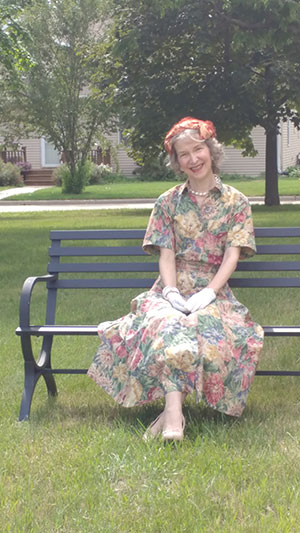| The Research for the Play
I started with a broad general search, as I do with all of my research projects. This included surveying extant sources (books, primarily) and their local availability.
Next, I moved to collective biographies, to get an overview of her life. At the same time, I started putting Ike through the same process.
I always include books written for elementary school students. I have written for this age; I know that vital information needs to be presented quickly, and that’s just what I want as I start my search.
Throughout my research, right up until the two weeks before performance, I would occasionally key in Internet searches, to see if something “new” had turned up. (This will be important to this story . . .)
But, early on, I found what seemed just a novelty—yet it turned out to be crucial to my telling of Mamie’s story. And that crucial thing was:
An on-line report of an auction at Christie’s, where Mamie’s charm bracelet sold for $20,000.
The writing angels had handed me a gift on a platter: The charm bracelet was an ideal vehicle for Mamie to tell her story.
I then chose two books to center on because, at the start of the year, I had set myself a summer deadline to present Mamie’s story (Mamie and Ike were married on July 1, 1916.) I chose two because I knew I could spend a lifetime researching everything that had been written about Mamie and her husband, and never finish: to reach my goal, I had to focus.
The first book, Mrs. Ike, was written by Mamie’s granddaughter, Susan Eisenhower. It contains many sweet and personal moments that only a granddaughter would have access to. But it is also objective, occasionally even scholarly, in its approach to a time and generation so different from the author’s.
The second book I selected was written by a contemporary of Mamie’s, a newspaper woman (I’m an old newspaperwoman myself). Dorothy Brandon was given exclusive access to Mamie during Ike’s first presidential run.
Shortly after Ike’s inauguration in 1952, Brandon’s biography, Mamie Doud Eisenhower: A Portrait of a First Lady, appeared. It is written in a style acceptable to early 20th Century readers, not so acceptable later on: that is, Brandon was unabashed in offering her own personal viewpoints and observations about Mamie. This was often helpful to me; sometimes, quite the opposite.
Still, the angels had given their second gift: Brandon’s book covered the years of Mamie’s life that she is best known for, her years as first lady, and what led her there. I would choose roughly the same time period for my own portrait of Mamie. It was so logical to me.
But charms always come in threes, it seems, and the angels weren’t done with me yet. Even as I was rehearsing the play and gearing up for opening night, I kept exploring, for my curiosity was piqued: I couldn’t watch an old movie or an episode of I Love Lucy without examining jewelry, handbags, dresses, hair styles, make-up choices. And so, two weeks before production, I searched (again) for just one more recording of Mamie’s voice on-line. Such recordings seemed to be rare in 2018. Maybe I used the wrong search terms.
And then I found it: 45 seconds of footage that changed my entire script. For those 45 seconds contained the fateful words:
“You are number two.”
I believe in research.
But I believe in angels, too
—Diana Star Helmer |
|
 |
|
| Diana Star Helmer in character as Mamie Doud Eisenhower, First Lady of the United States, in 1956 |
| |
| |
|


